Hera spacecraft on its way to study asteroid rammed in NASA's save-the-Earth test
In short:
The European Space Agency's Hera spacecraft blasted off from Cape Canaveral, Florida, on Monday, local time, despite warnings of Hurricane Milton.
Hera's mission marks the second part of a planetary defence program which began two years ago when NASA staged a dress rehearsal for the end of the world — ramming an actually harmless asteroid.
What's next?
Hera will travel to the scene of the crash and investigate whether the asteroid has a new crater or new shape and whether it has begun to tumble.
The European Space Agency's (ESA) Hera spacecraft has officially begun its journey toward a small, harmless asteroid that was rammed by NASA two years ago in a dress rehearsal for the day a killer space rock threatens Earth.
Called Dimorphos, the rammed space rock, located 11 million kilometres away, is a moonlet of Didymos — a fast-spinning asteroid that is five times larger.
The September 2022 crash by NASA's DART (Double Asteroid Redirection Test) spacecraft marked the first part of a planetary defence test that could one day save the planet.
The 22,530-kilometre-per-hour wallop sent rubble and even boulders flying off Dimorphos, providing an extra kick to the impact's momentum.
The debris trail extended more than 10,000km into space for months.
It shortened Dimorphos's orbit around its bigger companion by about 33 minutes — demonstrating that if a dangerous rock was headed our way, there's a chance it could be knocked off course with enough advance notice.
While speaking to the ABC News Channel on Tuesday, Swinburne University of Technology's Space Technology and Industry Institute co-director Rebecca Allen said this means we know the "kinetic impact technique" worked.
"But unfortunately that spacecraft was destroyed when it rammed into that small moonlet, and so now we need this follow-up investigation," Dr Allen said.
Hera to determine whether DART left a crater
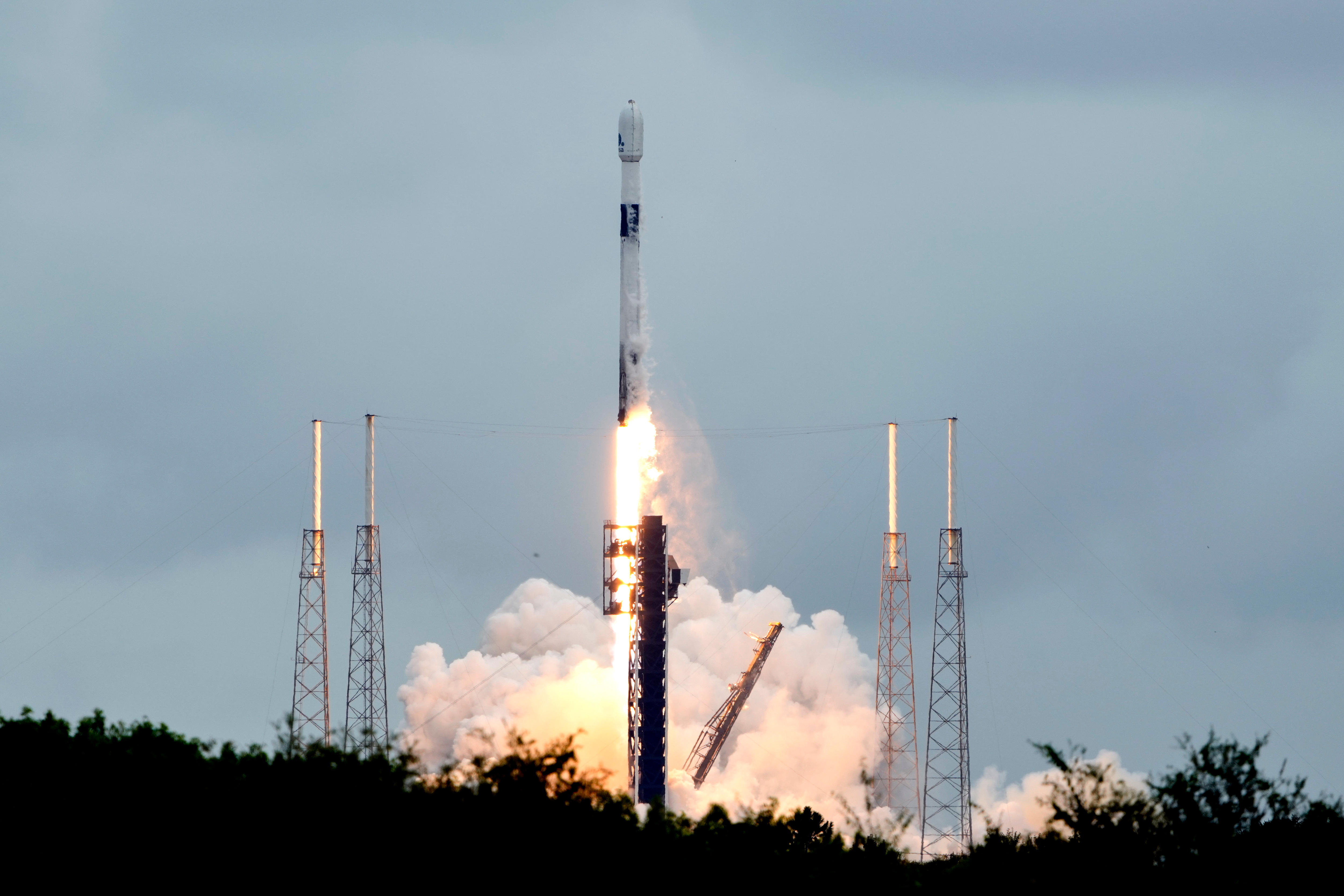
The European Space Agency's Hera spacecraft blasted off on Monday.
Hera's two-year journey to study the asteroid marks the second part of the defence plan.
Scientists are eager to examine the impact's aftermath up close to know exactly how effective DART was, and what changes might be needed to safeguard Earth in the future.
"The more detail we can glean the better, as it may be important for planning a future deflection mission should one be needed," University of Maryland astronomer Derek Richardson said before Monday's launch.
Researchers want to know whether DART left a crater or perhaps reshaped the 150-metre asteroid more dramatically.
Analysis of the DART mission has suggested that rather than being a single hard rock, Dimorphos was more a loose pile of rubble held together by gravity.
"The consequence of this is that, instead of making a crater" on Dimorphos, DART may have "completely deformed" the asteroid, Hera's principal investigator Patrick Michel said.
Dr Richardson, who took part in the DART mission and is helping with Hera, said it looked something like a flying saucer before DART's blow and may now resemble a kidney bean.
Some boulders and other debris could still be hanging around the asteroid, posing a potential threat to Hera, flight director Ignacio Tanco said.
"We don't really know very well the environment in which we are going to operate," Mr Tanco said.
"The whole point of the mission is to go there and find out."
Launch went ahead despite Hurricane Milton warnings
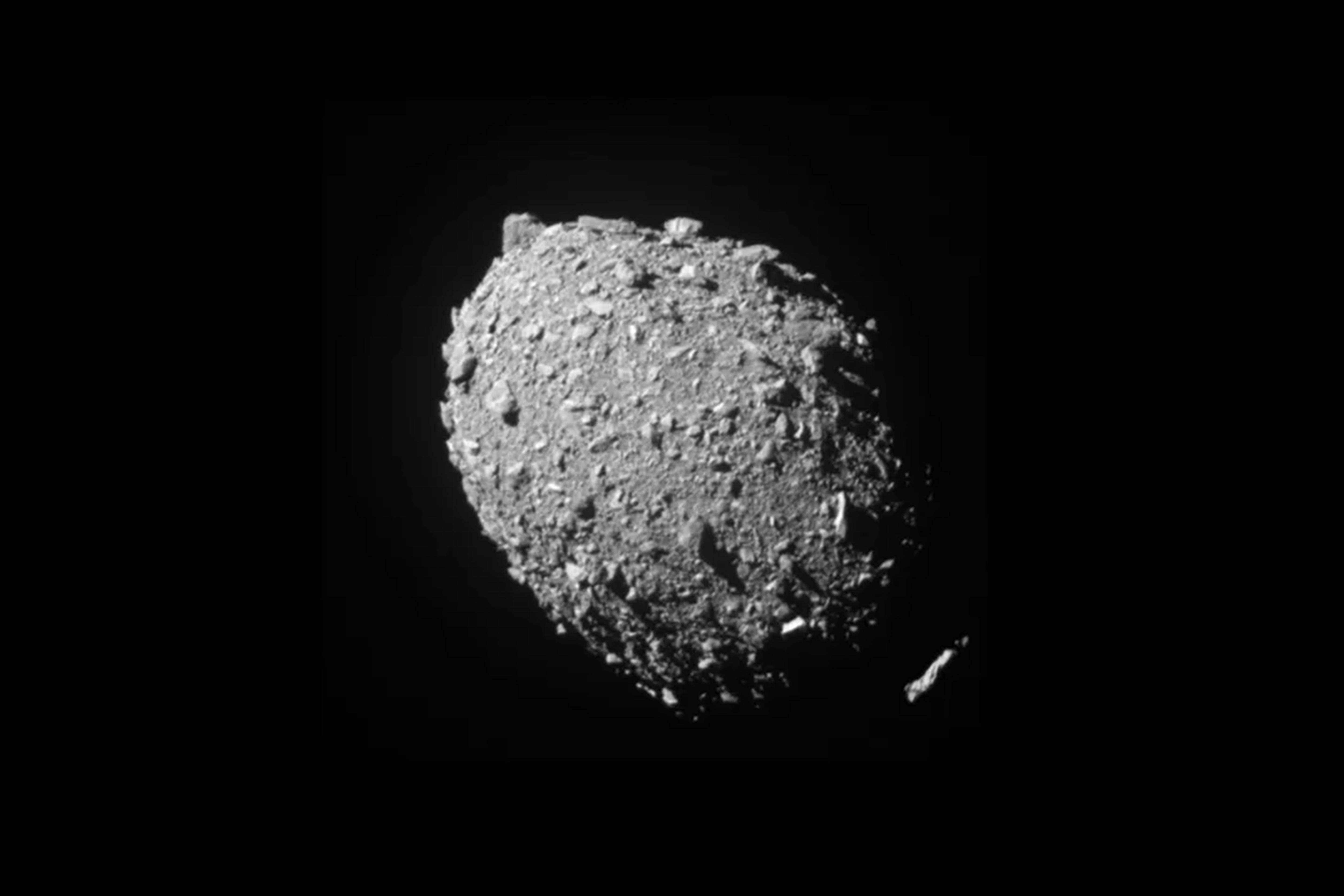
Called Dimorphos, the rammed space rock 11-million-kilometres away is a moonlet of Didymos.
SpaceX's Falcon 9 rocket disappeared with Hera into cloudy skies at Cape Canaveral, Florida about 10:53am, local time, on Monday, according to a live webcast.
The ESA selected Elon Musk's SpaceX for the launch to fill a gap in Europe's own access to space.
European officials describe the 363 million euros ($589 million) mission as a "crash scene investigation".
Hera "is going back to the crime site and getting all the scientific and technical information," project manager Ian Carnelli said.
An hour after the launch, applause erupted in the control centre in Germany as the spacecraft separated from the rocket's upper stage and then called home.
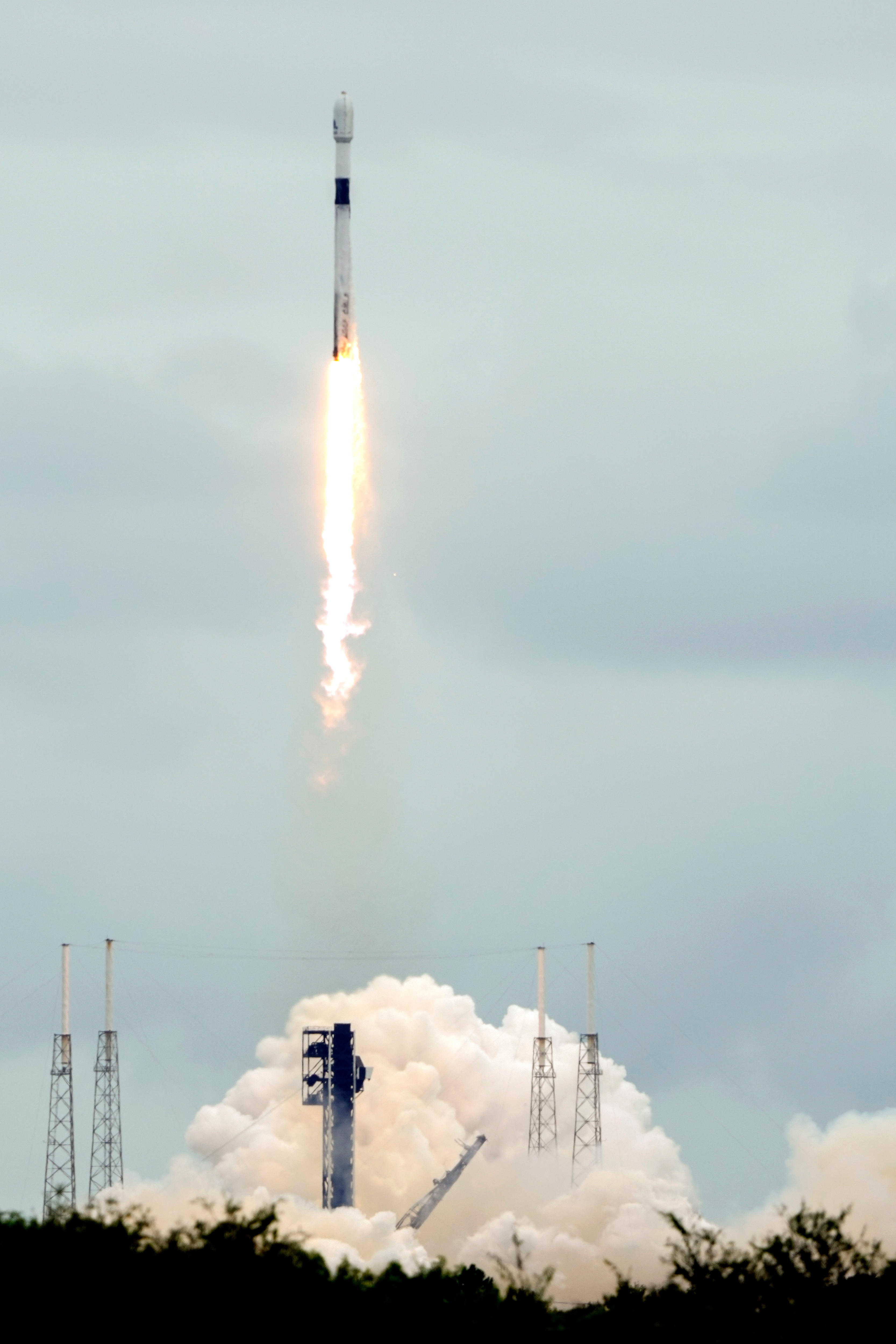
SpaceX's rocket disappeared with Hera into cloudy skies at Cape Canaveral at 10:53am on Monday.
"It's an amazing day," the space agency's director general Josef Aschbacher said afterward.
"Hera will gather the data we need to turn kinetic impact into a well-understood and repeatable technique on which all of us may rely one day."
The launch had been put into doubt by the intensifying Hurricane Milton, with SpaceX warning on Sunday that there was only a 15 per cent chance of a launch.
Milton is the latest hurricane to hit the Gulf of Mexico after Hurricane Helene, which has killed at least 230 people since striking Florida late last month.
Hurricane Milton has been classified as "an extremely dangerous category four hurricane" and is expected to slam into the state by mid-week.
Hera's launch had also faced a potential delay due to an anomaly involving a Falcon 9 rocket during the launch of SpaceX's Crew-9 astronaut mission late last month.
But the US Federal Aviation Administration gave the last-minute green light on Sunday, saying the nature of the problem posed little risk for Hera.
Probe may face precarious touchdown
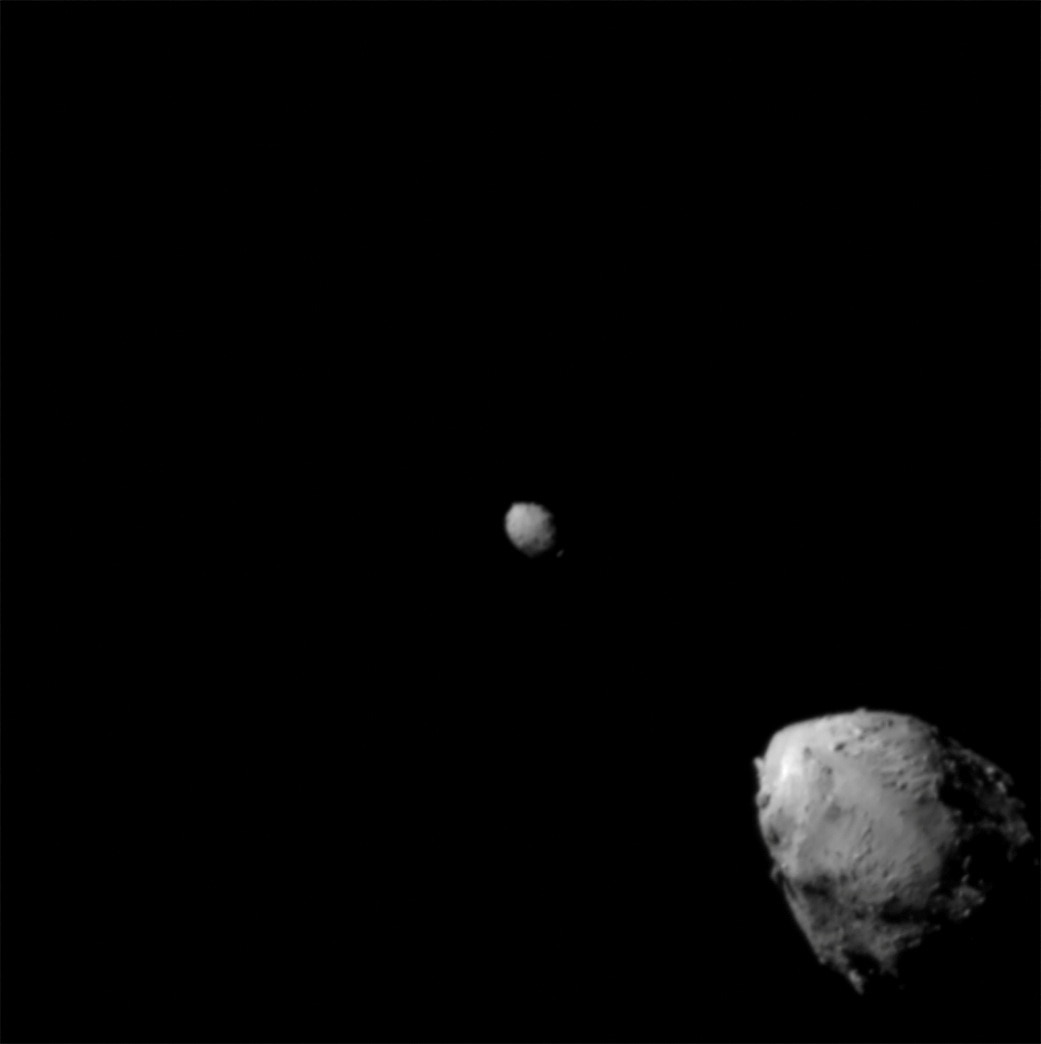
Didymos — Greek for twin — is a fast-spinning asteroid five times bigger than Dimorphos.
Carrying a dozen science instruments, the small car-sized Hera will need to swing past Mars in 2025 for a gravity boost before arriving at Dimorphos by December 2026.
At that time, the asteroid will be 195 million kilometres from Earth.
Hera will attempt to go into orbit around the Dimorphos and its twin, with the flyby distances gradually dropping from 30km all the way down to 1km.
Before the 2022 impact, Dimorphos circled its larger companion from 1,189m out.
Scientists believe the orbit is now tighter and oval-shaped, and that the moonlet may even be tumbling.
If the moonlet is tumbling, that will complicate the endeavour.
Hera may also end its mission with a precarious touchdown, but on the larger Didymos.
Findings could show asteroid's origins
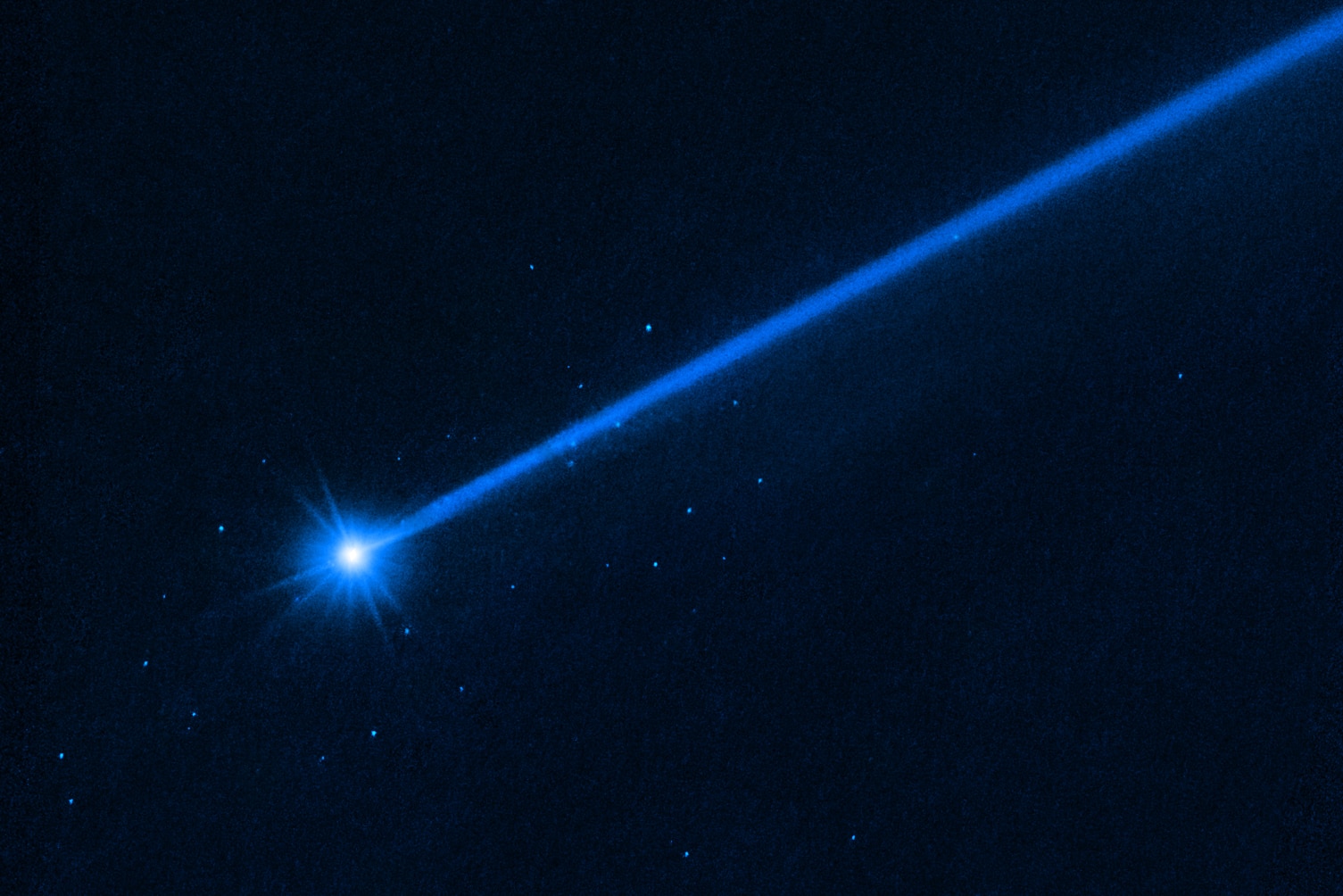
The Hubble Space Telescope sent back images of the site four months after the crash.
The spacecraft will survey the moonlet for at least six months to ascertain its mass, shape, composition and its orbit around Didymos.
As well as assessing the results of 2022's impact, scientists will attempt "to understand the physics that drive this peculiar shape that we see in the much larger 700m diameter Didymos asteroid", Dr Allen said.
"Because it's a binary system, we can see this kind of interplay between the larger asteroid [and the smaller asteroid] and study it in very high detail."
Scientists suspect Dimorphos was formed from material shed from Didymos.
Two shoebox-sized Cubesats will pop off Hera for even closer drone-like inspections, with one of them using radar to peer beneath the moonlet's boulder-strewn surface.
The Cubesats will attempt to land on the moonlet once their survey is complete.
The radar observations should help confirm whether Didymos is indeed the little moon's parent.
Leftovers from the solar system's formation 4.6 billion years ago, asteroids primarily orbit the Sun between Mars and Jupiter in what's known as the main asteroid belt, where millions of them reside.
They become near-Earth objects when they're knocked out of the belt and into our neck of the woods.
NASA's near-Earth object count currently tops 36,000, almost all asteroids but also some comets.
More than 2,400 of them are considered potentially hazardous to Earth.
An asteroid wider than a kilometre — which could trigger a global catastrophe on a scale that wiped out the dinosaurs — is estimated to strike Earth every 500,000 years or so.
An asteroid about 140m wide — which is a little smaller than Dimorphos but could still take out a major city — hits our home planet around every 20,000 years.
Most of these celestial objects come from the asteroid belt between Mars and Jupiter.
There are also no known 140m asteroids on a collision course with Earth — but only 40 per cent of those space rocks are believed to have been identified.
"This is a challenge for us," Dr Allen said.
"Even though we can see the most distant galaxies in the universe, spotting asteroids in our galaxy is still challenging because they're small and they move very quickly.
"That means we can find them, but they might be pretty close to Earth by the time we do that.
"We want to have these kind of planetary protection missions in place, know they work and know exactly what will happen if we decide to impact an asteroid with a spacecraft to get it off course."
ESA will approach one of these asteroids in 2028, before it approaches Earth in 2029, she said.
ABC/wires
By:https://www.abc.net.au/news/2024-10-08/hera-spacecraft-on-its-way-to-study-asteroid/104444546(责任编辑:admin)
下一篇:When Hamas attacked Be’eri, residents led the resistance until the army arrived – but it was an agonising wait
 Socceroos rescue a point
Socceroos rescue a point  Wallabies thrash Wales 52
Wallabies thrash Wales 52 Jake Paul beats Mike Tyso
Jake Paul beats Mike Tyso Live updates: England vs
Live updates: England vs  US election 2024: Donald
US election 2024: Donald  US election live: Kamala
US election live: Kamala
- ·North Korea's latest weapon agains
- ·Hezbollah says Israel 'cannot impo
- ·Inside the rise of US oligarchs and how
- ·Thailand's worst suspected serial
- ·Tabi shoes are turning heads from Holly
- ·FBI arrests Florida man planning attack
- ·Illegal immigrant gets life sentence fo
- ·Bibles, water, watches and sneakers: Do
- ·North Korea's latest weapon against
- ·Hezbollah says Israel 'cannot impose
- ·Inside the rise of US oligarchs and how i
- ·Thailand's worst suspected serial ki
- ·Tabi shoes are turning heads from Hollywo
- ·FBI arrests Florida man planning attack o
- ·Illegal immigrant gets life sentence for
- ·Bibles, water, watches and sneakers: Dona
- ·US to give Kyiv anti-personnel landmines
- ·An arrest warrant for Benjamin Netanyahu
- ·One of Vietnam's high-profile politi
- ·Shanghai Walmart Attack: A Man Randomly S
- ·South Korean police officers jailed over
- ·Cambodia publicly shames maid deported af
- ·North Korea to use all forces including n
- ·Philippines condemns China attack of Viet
- ·US adds 2 more Chinese companies to Uyghu
- ·North Korean defector steals South Korean
- ·Malaysia deports Cambodian worker for cal
- ·Rebels battle for Myanmar junta’s weste

